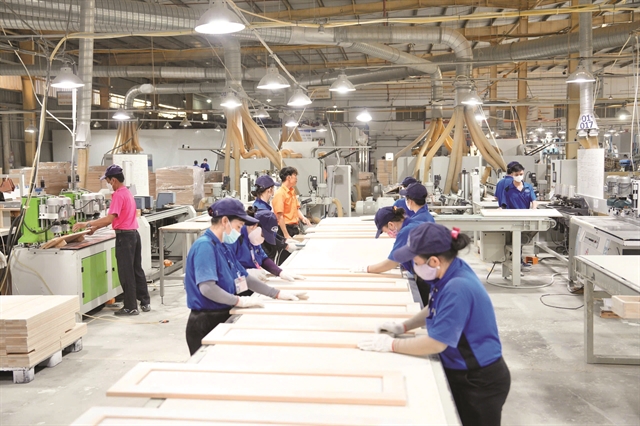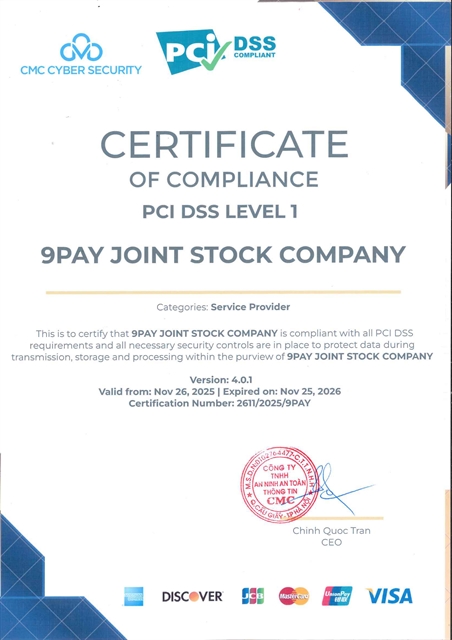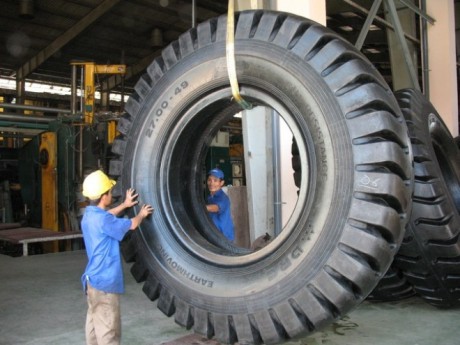 Economy
Economy


|
| Workers of Đà Nẵng Rubber firm load a tyre in its factory. The firm reported higher profit in Q1. — Photo Tapchicaosu. |
HÀ NỘI — Lower natural rubber prices and falling oil prices helped cut input costs of local tyre firms and increased their profits in the first quarter.
Southern Rubber Industry Company Rubber (Casumina) reported profit six times higher in Q1 compared to the same period last year. While Sao Vàng Rubber and Đà Nẵng Rubber companies reported profit three and 2.2 times higher, respectively.
In Q1, Đà Nẵng Rubber, coded DRC on Hồ Chí Minh Stock Exchange (HoSE), recorded net revenue of VNĐ803 billion (US$33.9 million), down slightly by 2.4 per cent from the same period last year. But the lower input cost of about 8 per cent helped gross profit increase by 47.5 per cent to reach VNĐ118 billion.
The firm’s after-tax profit reached VNĐ37.4 billion in Q1, 2.2 times higher than the same period last year.
The company report said: “The profit is from the lower raw material purchasing prices.”
Similarly, Casumina, with the sticker CSM on HoSE, saw an after-tax profit of VNĐ12.7 billion, six times higher than the same period last year, while Sao Vàng Rubber, with sticker SRC on HoSE, reported an after-tax profit of VNĐ7.4 billion, three times over its last Q1 result.
According to Saigon Securities Inc’s research centre, as most tyre firms’ main raw materials were natural rubber and rubber materials, lower prices for rubber helped cut input costs.
The natural rubber prices in the Tokyo futures market recorded its lowest level at 130 Japanese yen ($1.21)per kilogramme in early April. At the same time, oil prices are in a downward trend due to the impact of the pandemic and the oil price war between Russia and Saudi Arabia. Brent oil price plummeted since the beginning of February and reached the lowest level in four years, at $15.9 per barrel as of March 31.
Different plans
Despite gaining strong business results in the first quarter, Đà Nẵng Rubber predicted a sharp decrease in the second quarter, estimating the industrial production value to reach VNĐ541 billion, down 33 per cent compared to Q1, and down 50 per cent compared to the same period last year.
The firm also calculated that consumption revenue would drop by 21 per cent from Q1 and 43 per cent from the same term last year. The profit before tax of Q2 was estimated at VND 37.7 billion, down 19 per cent from Q1 and 58 per cent from last same term.
The firm’s leader said there would be more difficulties for the firm this year due to the pandemic, US-China trade war and the anti-dumping tax law.
Sao Vàng Rubber also planned a light decrease of one per cent in revenue which was estimated to reach VNĐ916 billion for the whole year, but a 59 per cent decrease in profit before tax which was about VNĐ21 billion.
Casumina, on the other hand, reported a better plan for 2020, with an estimated revenue of nearly VNĐ5 trillion, an increase of 14 per cent, and profit before tax of VNĐ150 billion, an increase of 230 per cent over 2019.
The firm’s leaders said that though there were difficulties, there were also advantages to take, mentioning the Vietnam - EU Free Trade Agreement (EVFTA) which was expected to take effect in July, the infrastructure development strategy and domestic automobile manufacturing and assembly industry as well as the opportunity to enter the US market.
As exports accounted for a large proportion in the revenue structure of Đà Nẵng and Casumina Rubber, with 43 per cent and 39 per cent, respectively, Đà Nẵng Rubber was to focus strongly on markets where China has difficulties due to tariff barriers, such as the US, Europe and India, while Casumina's main markets include Southeast Asia, Europe and the US.
Currently, Sao Vàng rubber export revenue accounts for 19 per cent of total revenue in 2019 to Cambodia and Malaysia.
Yesterday, shares of Casumina and Đà Nẵng increased about one per cent to close at VNĐ15,400 and 18,700 each, respectively, while shares of Sao Vàng Rubber Firm lost 0.9 per cent to close at VNĐ16,000 each on HoSE.— VNS